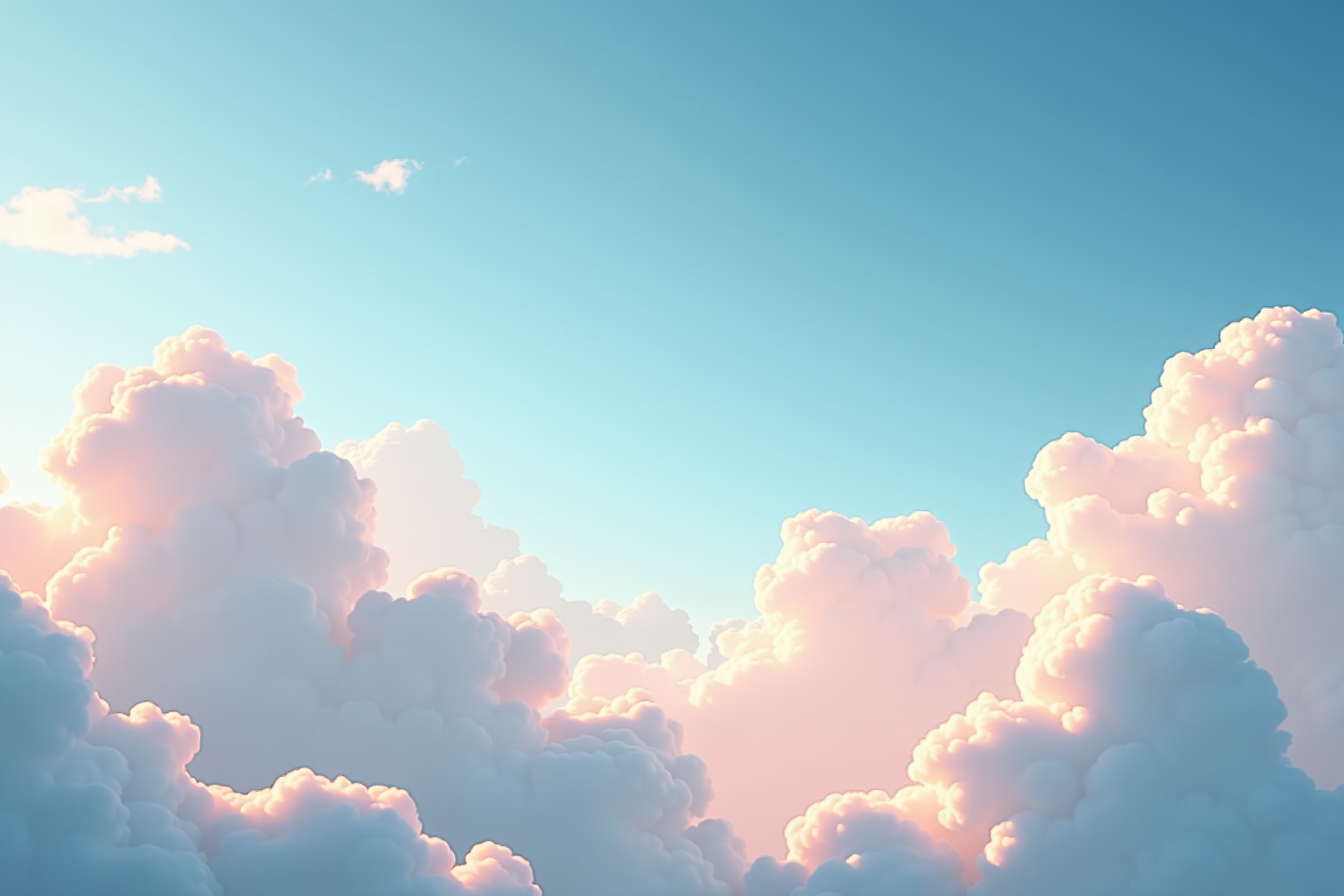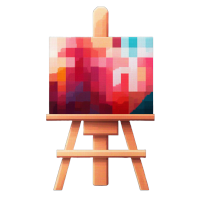Painting Realistic Clouds in Oil
Unlock the secrets of the sky with our captivating oil painting sky tutorial, designed to elevate your cloud painting skills to new heights. Imagine transforming your canvases into breathtaking landscapes where each cloud formation takes on a life of its own, evoking emotions ranging from serene tranquility to dramatic tension. This article delves into the intricacies of various cloud types, such as the deliciously fluffy cumulus or the delicate wisps of cirrus, providing you with essential tips on capturing their essence through color mixing and brush techniques. You'll learn how to manipulate light and shadow, layer colors effectively, and observe the ever-changing sky to create artwork that resonates with viewers. Ready to paint not just what you see, but what you feel? Join us as we embark on this artistic journey into the enchanting world of cloud painting, where inspiration awaits at every glance upward.
Painting Realistic Clouds in Oil

Capturing the Ethereal: The Art of Painting Realistic Clouds in Oil
The sky presents an ever-shifting canvas, a dynamic realm where clouds dance and play, creating moods that can inspire the deepest emotions in both artists and viewers alike. As a Sky Painter, I believe that painting clouds in oil can transcend mere representation; it has the power to evoke a sense of serenity, drama, or even nostalgia. This oil painting sky tutorial will guide you through the intricate world of cloud formations and the delicate art of color mixing, equipping you with the techniques to bring your skies to life.
Cloud formations are the foundation of a compelling sky. Understanding their structure and behavior is vital for achieving realism in your artwork. From the fluffy, cotton-like cumulus clouds to the ethereal wisps of cirrus, each type has its own unique characteristics that can influence the overall atmosphere of your painting. By examining these formations, we can learn how to interpret and recreate them on canvas.
Equally important is the mastery of color mixing for skies. The hues of a sunrise or sunset can inspire awe, while a stormy sky can evoke feelings of tension. Through a careful blend of colors, you’ll be able to capture the ephemeral beauty of light and shadow in your cloudscapes. Color mixing is not just about selecting pigments; it’s about understanding how light interacts with the atmosphere and your canvas.
In the following sections, we will delve deeper into these vital components of cloud painting. With a blend of knowledge and technique, you will soon wield your brush with confidence to paint realistic clouds that resonate with life and emotion. Let’s explore the captivating sky together!
Understanding Cloud Formations

As we embark on our journey of painting clouds in oil, it’s essential to familiarize ourselves with the various cloud formations that grace our skies. Cloud formations not only dictate the overall aesthetic of a painting but also carry distinct emotions and meanings in the context of the scene being portrayed. Observing these formations offers invaluable insights that can greatly enhance your painting skills.
Types of Cloud Formations
Cumulus clouds are perhaps the most recognizable. They are the quintessential "fluffy" clouds often found in fair weather. These clouds are puffy and white, resembling cotton balls, and they typically indicate stability in the atmosphere. When painting cumulus clouds, focus on their softness. Use a palette knife or a soft filbert brush to create their rounded edges. It’s essential to layer your whites with subtle shades of blues and grays to give depth and dimension. For instance, mixing titanium white with a touch of ultramarine blue can yield a perfect base, evoking a sunlit quality.
In contrast, the wispy cirrus clouds carry a different allure. Thin and feather-like, these clouds are usually found high in the sky and can indicate a change in weather. When painting these delicate formations, consider using a fan brush to create fine lines that mimic their airy nature. A light wash of blue can serve well as a base beneath the white highlights, allowing the translucency of the cirrus clouds to shine through.
Furthermore, we can’t overlook the more dramatic stratus and nimbus clouds, which often herald stormy weather. Stratus clouds appear in uniform layers, casting a grayish tone across the sky. To capture these clouds effectively, work in broader strokes, allowing the paint to flow into each other seamlessly. This technique will help establish the moody atmosphere these clouds bring. For heavy nimbus clouds, incorporate muted colors like burnt umber and deep blues to create a sense of impending rain.
Techniques for Realistic Clouds
In the realm of oil painting sky tutorials, understanding light and shadow plays a critical role in replicating cloud formations realistically. Light often comes from overhead or the horizon, affecting how we perceive and portray clouds. The secret lies in layering. Start with a base layer using a medium to thin your oil paints, allowing the colors to blend naturally. Gradually build up the clouds with thicker paint, reserving pure white for highlights—this creates a striking contrast and brings your clouds to life.
Additionally, be mindful of your brush techniques. A dry-brush method can create the texture needed for the softness of cumulus clouds. In contrast, stippling or sponging can provide a rugged texture for tumultuous storm clouds. Consider using a fan brush to create the fringed edges characteristic of cirrus clouds.
Observation and Practice
Lastly, remember that the sky is in constant flux. Spend time observing cloud formations at different times of day and under various weather conditions. Take photographs or sketch them on location. These practices will deepen your understanding of how to interpret these formations when you sit down to paint.
As you dive into painting clouds in oil, let the beauty and diversity of cloud formations guide your hand. From serene sunlit skies to foreboding storm clouds, mastering these elements will empower you to capture the essence of the sky—creating artworks that elicit emotion and inspire viewers, much like the skies we gaze upon.
Color Mixing for Skies

In the vibrant realm of painting clouds in oil, color mixing plays a pivotal role in reproducing the breathtaking beauty of the sky. A successful oil painting sky tutorial should emphasize the necessity of selecting and blending colors that accurately reflect the atmosphere. The sky is not just a flat expanse of blue; it is a rich tapestry of hues that shift with time, weather, and light. Each moment presents a unique palette that must be captured with intention and skill.
When approaching color mixing for skies, it is essential to appreciate how the atmosphere affects colors. The interplay of light and atmospheric particles can create an array of tones, often seen in sunrises, sunsets, and stormy skies. For instance, during sunrise, the sky ignites with warm tones of orange, pink, and soft purple. To replicate this ethereal glow, start with a base of warm yellow, and mix in cadmium red to create a lively orange. To add depth, consider blending in small amounts of white and alizarin crimson, which can yield soft pinks that replicate the early light's radiance.
Conversely, a stormy sky presents a different palette—often dominated by cooler, darker hues. When painting ominous clouds, begin with a foundation of Payne's Gray mixed with ultramarine blue. This combination will provide a solid base for your storm clouds. To create dimension, introduce touches of burnt sienna or even a hint of black, but use these sparingly. Layering is key when painting clouds; by applying the darker tones first and gradually blending lighter hues, you can achieve a sense of depth that mirrors the turbulent atmosphere before a storm.
The importance of layering cannot be overstated. To enhance realism, work from transparent to opaque layers. For example, start with a very thin wash of your selected base color, allowing it to dry slightly before adding thicker applications of paint on top. This method not only contributes to a rich color development but also encourages luminosity, giving your clouds that intended "glow." Use palette knives or stiff brushes to scrape and blend, as they can create cloud-like textures that soft brushes might not achieve.
Additionally, the understanding of complementary colors can significantly impact your sky paintings. When contrasting the warm colors of the sun-drenched horizon with the cool blues of the upper sky, you engage the viewer's eye. A touch of complementary colors, such as mixing a little yellow-green into the cooler blues, can impart vibrancy and life to your clouds, making them feel more dynamic and engaging.
Practical application is vital, and often, the best way to hone your color mixing skills is through observation. Spend time outdoors at various times of the day, noting the ebb and flow of colors in the clouds. Take photographs or make quick sketches to capture the essence of those fleeting moments. Additionally, create a color chart that includes your preferred hues and mixtures, allowing you to refer back to them when working on future pieces.
As you practice color mixing for skies, remember that experimentation is your ally. Don’t hesitate to explore unconventional combinations or methods—this exploration can lead to unique results that define your artistic style. By attentively observing the shifting tones of the sky and mastering the art of color mixing, you will enhance your capability to paint realistic clouds in oil that draw viewers into the very essence of the sky you wish to depict. Together, with a firm grasp on these principles, your journeys as a Sky Painter will flourish, resulting in artworks that resonate with the soul.
Bringing Skies to Life: A Conclusion
As we conclude our exploration into the ethereal world of painting realistic clouds in oil, we've uncovered fundamental techniques that elevate our artistry. Understanding the distinct characteristics of various cloud formations—from the buoyant cumulus to the feathery cirrus—offers essential groundwork for creating dynamic sky scenes. Mastery of color mixing has proven vital, too, allowing us to capture the shifting moods of dawn, dusk, and storm. Layering techniques and the thoughtful blending of hues enable your clouds to reflect the delicate interplay of light and shadow, inviting viewers into the atmosphere you depict.
Engagement with the natural world remains paramount in developing our painting skills. Observing and sketching clouds in different weather conditions equips us with the knowledge needed to replicate their transient beauty on canvas. Remember, experimentation is your ally; don’t shy away from unconventional mixtures and methods that can lead to distinctive results indicative of your own style.
As you embark on your journey as a Sky Painter, let the dynamic displays above inspire your brush and ignite your creativity. Paint not just what you see but also what you feel, capturing the ever-changing skies that reflect the human experience. Together, let’s create artworks that resonate deeply and elevate the skies from mere background to the essence of our artistic storytelling. So, gather your supplies, step outside, and take that leap into the vast beauty waiting to be captured.
